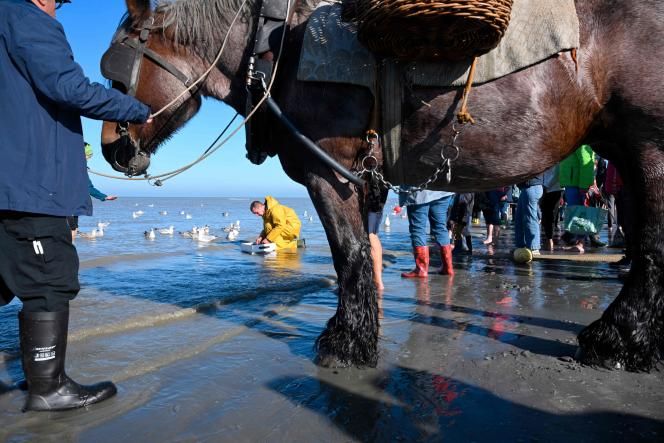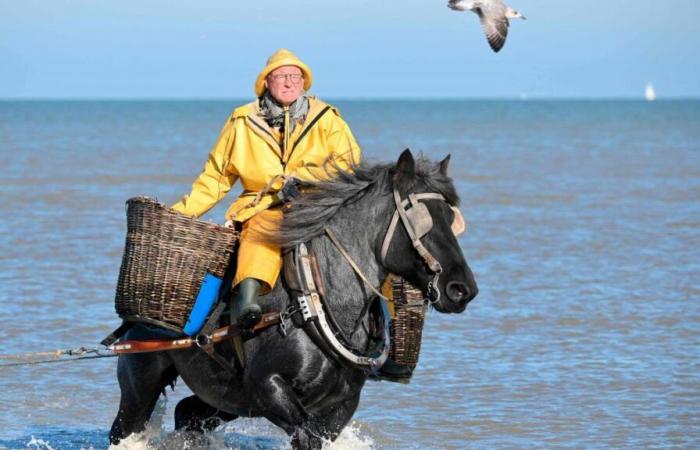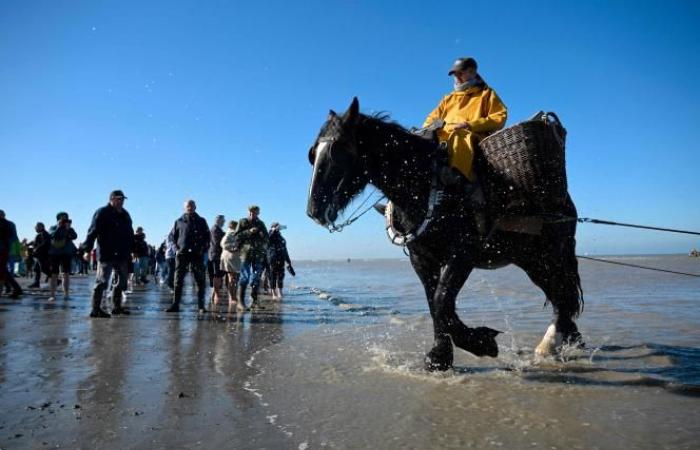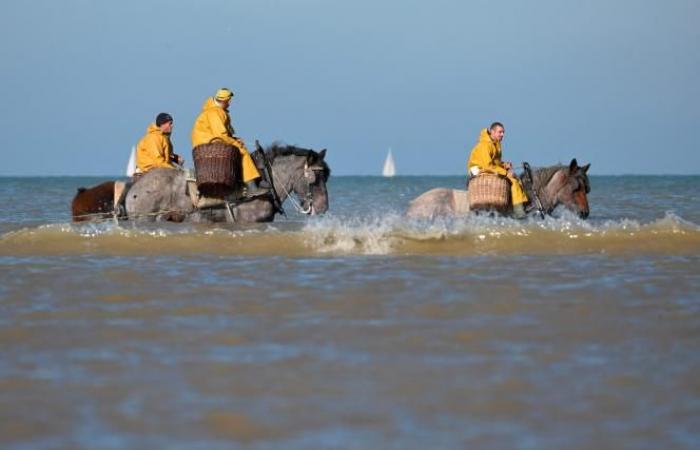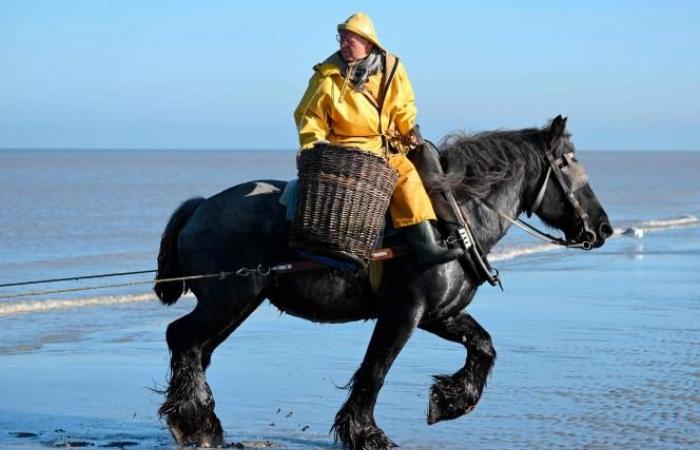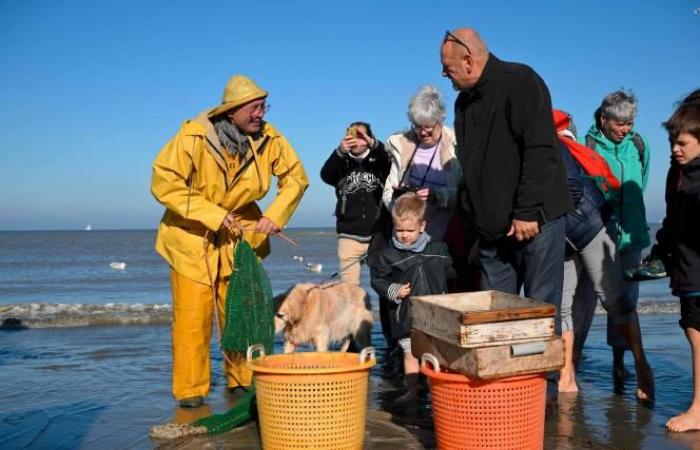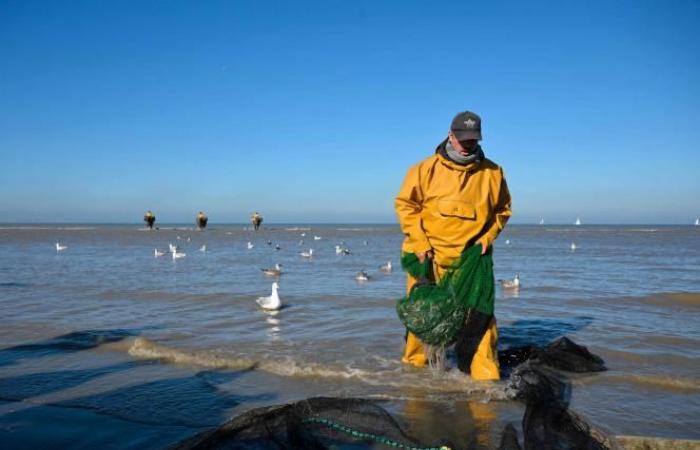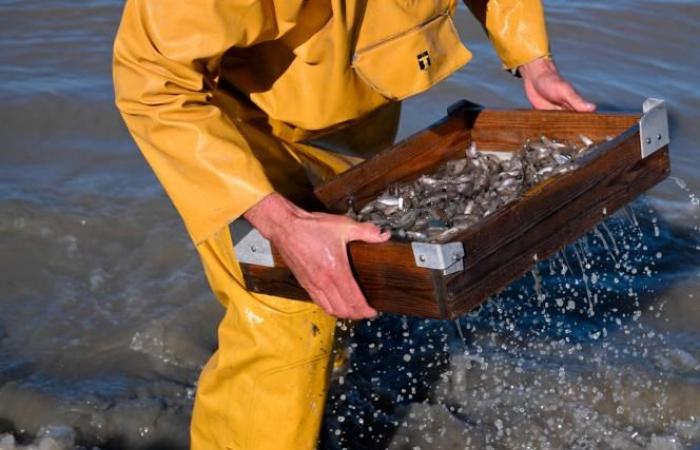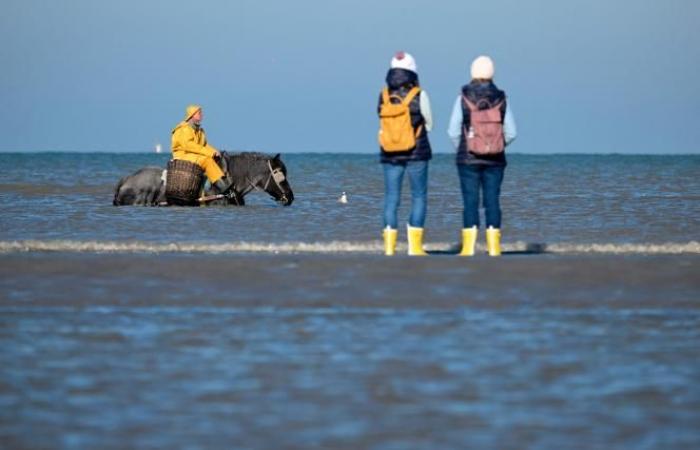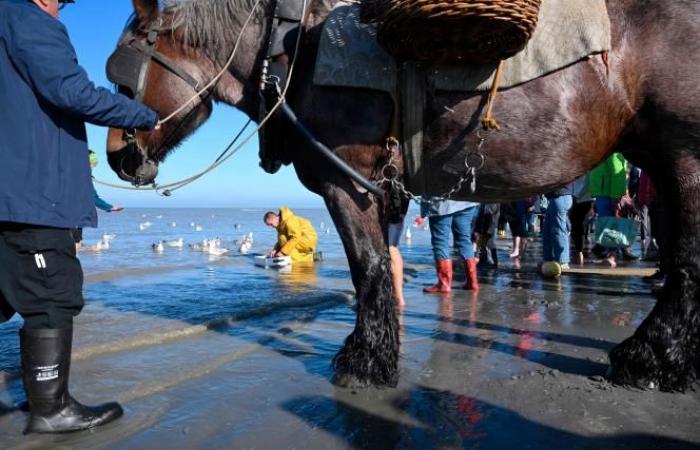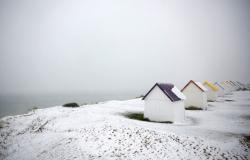LThe horses advance slowly, parallel to the beach, in water up to their necks.
The riders dressed in yellow waxed jackets and pants stand out against the blue of the sky.
The seagulls move in the wake of the nets pulled by the horses.
In the Belgian commune of Oostduinkerke, on the North Sea, shrimp fishing is still practiced on horseback.
Although this coastal tradition has gradually disappeared across Europe, it has been maintained here, where it is listed as UNESCO’s intangible cultural heritage.
It is no longer the subject of commercial exploitation, but is a major tourist attraction for this small town located around twenty kilometers from the border with France.
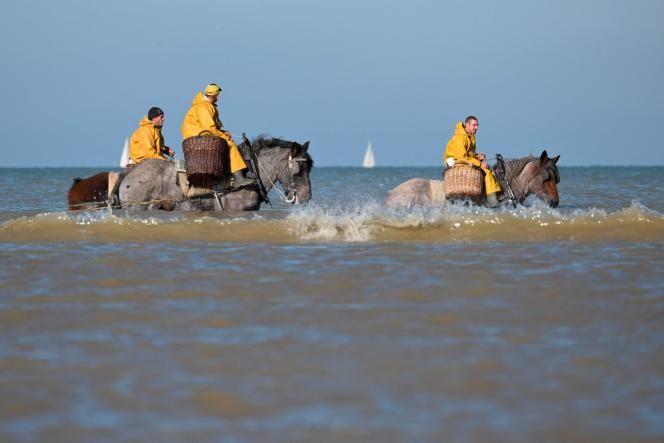
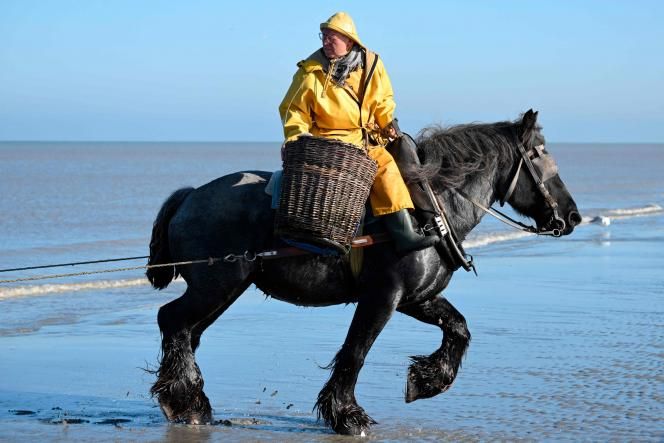
Initially, farmers went to the coast to fish and supplement their diet.
First by pulling nets on foot, then with mules and gradually farm horses, more robust and capable of pulling larger nets.
A method known in Belgium as in the North of France, the Netherlands, or the south of England.
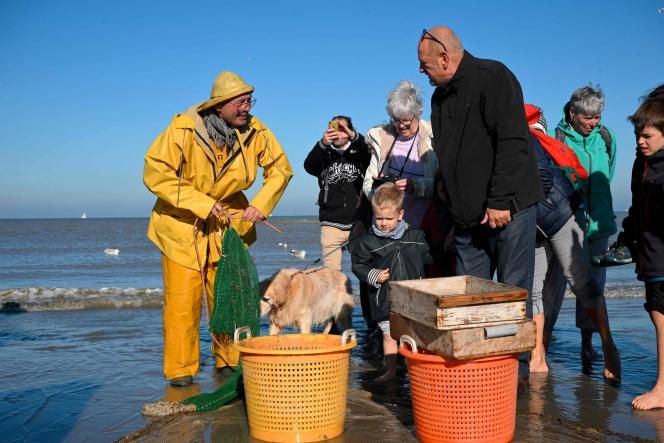
“Accustomed to having an audience”
There are five of them fishing for brown shrimp on this sunny day at the end of October, taking advantage of the low tide.
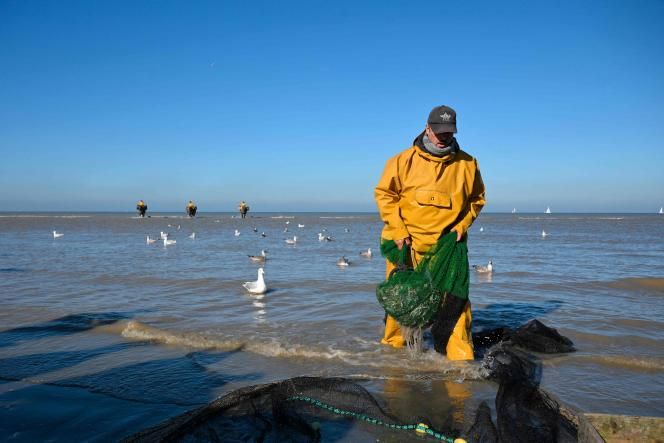
“This is the last place in the world where we fish this way,” explains Flemish fisherman Gunther Vanbleu as he sorts his catch on the beach, amid an impressive crowd of curious people brandishing their smartphones to catch the scene.
“Being on your horse, in the sea, it’s quite fun actually. And we’re used to having an audience, because it’s unique and people like to see that, the shrimp and the big horses. »
Barefoot or with boots on, nearly 200 people are present to watch the show.
The catch of the day will not be sold.
The few kilos of shrimp will simply be cooked by the dozen families still practicing this fishing, and shared among friends.
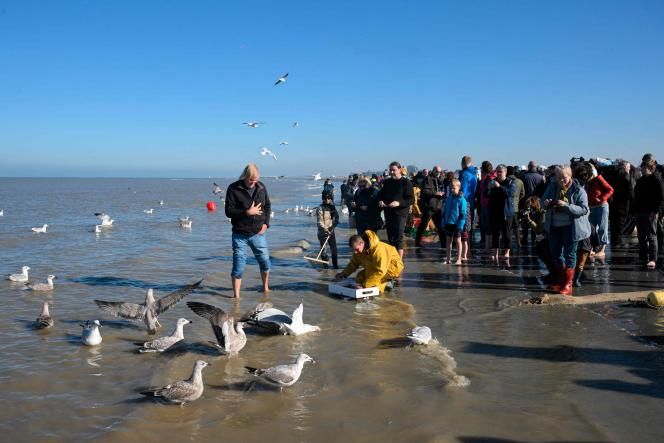
But the activity continues and always attracts tourists from April to October.
“I think this tradition will continue,” continues Gunther Vanbleu, emphasizing the impact of UNESCO’s intangible cultural heritage classification.
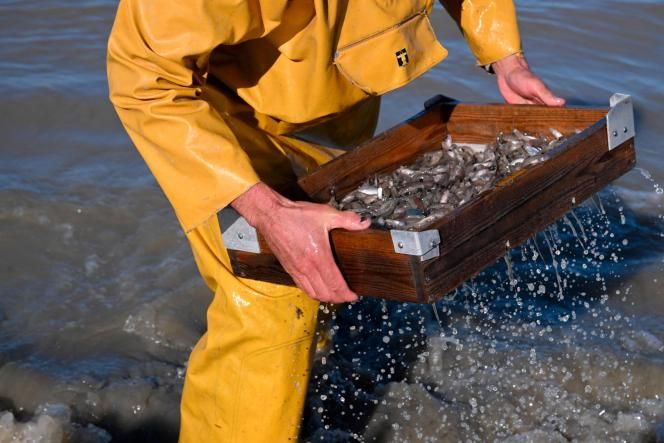
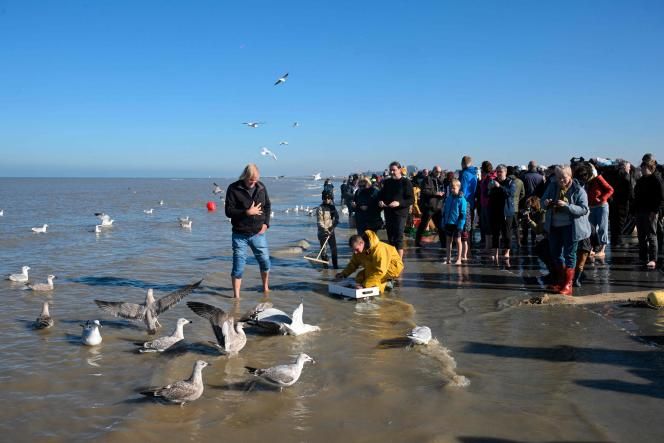
Asked about the impact of climate change, he highlights changes.

“We see that this is changing a little: the water temperature, the arrival of new species…” he explains.
“Maybe if the water gets too warm, the shrimp will move to colder waters. It’s a possibility. If that happens, we’ll see. For the moment, this is not yet a problem…”.
